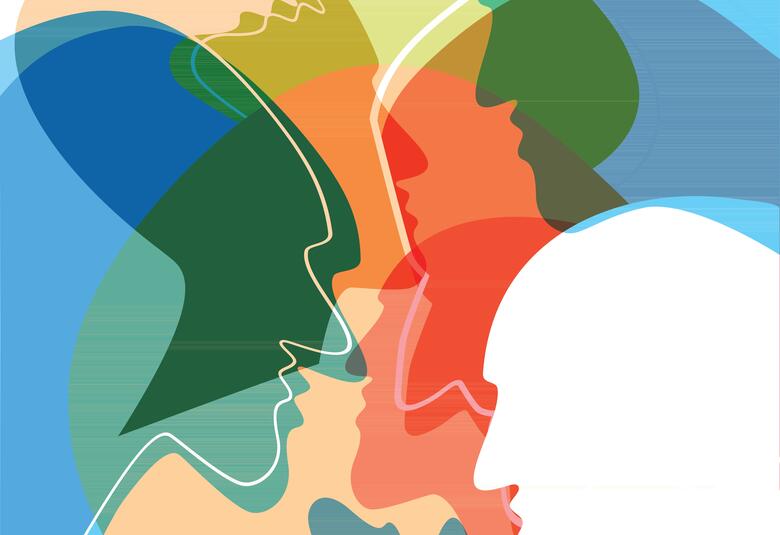The effects of the COVID19 pandemic have impacted everyone to a greater or lesser extent, often with negative consequences to people’s mental well-being. Those on the psychosis spectrum may be especially vulnerable, especially if support services have been restricted. #SIRS2021 a panel of experts shared insightful knowledge of psychosis gained since early 2020.
Overall, panel members collected data on levels of psychosis from a diverse array of subjects, ranging from the population as a whole to those having a formal diagnosis of chronic schizophrenia. Thus, the entire psychosis continuum was represented.
Resilient Veterans?
Dr Amanda McCleery, University Iowa, IA, examined three groups of Veterans living in Los Angeles over the course of the first pandemic lockdown: those with a chronic psychotic condition in residential care (Veterans with Psychosis; VP) (n=81) or recently housed (Veterans with Psychosis Housed; VPH) (n=76) and healthy controls (n=74).
The pandemic clinically impacted all three groups of veterans – they all experienced increased depression, anxiety, loneliness and concerns about becoming infected. Unexpectedly, after a few months, these symptoms had decreased to pre-COVID19 levels in both the VP and VPH groups, but not in the controls.
Depression, anxiety, loneliness and concerns about becoming infected decreased to pre-COVID19 levels in veteran patients, but not in the controls. But why?
Had the more vulnerable groups made more use of remote Veteran Association support service than controls, Dr McCleery speculated? Or were the patients with psychosis more resilient and better used to coping with life disruptions?
Interestingly, symptoms did not track with the activities going on in the Los Angeles at the time – which were quite turbulent. However, there were lower levels of community integration in those with psychosis. Whether these findings are transient or not remains to be seen in this ongoing study.
Attenuation of psychosis in the general population during lockdown?
Dr Anne Giersch, University of Strasbourg, France, examined whether attenuation of psychosis symptoms was observable in the general population during the pandemic lockdown.
Questionnaires were issued to 200 recruits (via. the internet) which were to be completed 4 times during the study: pre-lock down, mid-lockdown, end of lockdown and 1.5 months post-lockdown. Demographic data and data using the DASS-42 (stress, anxiety, depression), PQ-16 (prodromal psychosis symptoms), and UCLA feelings of loneliness tools were captured alongside daily, 10 line, written narratives of feelings which were used to measure emotional health.
In total, 94 recruits completed all 4 questionnaires and these respondents appeared to be coping well with lockdown. However, Dr Giersch also examined the data from 68 recruits lost to follow up - and here things were less upbeat. In this group there was a statistically significant increase in signs of psychosis (p<0.005) seen pre-lock down compared to those that completed the study. Written narratives also signaled attenuation of psychosis symptoms, with increased use of negative words being a sensitive measure of people’s emotional well-being.
Within the general population, a statistically significant increase in signs of psychosis were seen vs. pre-lock down
Thus, she concludes, anxiety, stress and depression are not the only symptoms to be investigated during the pandemic. Rates of attenuated psychosis symptoms are also impacted in the general population. The state of those lost to follow-up is particularly worrying.
Anxiety, stress and depression are not the only symptoms to be investigated during the pandemic
Negative symptoms worsened during the pandemic – but is it a transient effect?
Dr Greg Strauss, Georgia, GA, examined effects on negative symptoms during the pandemic in those with chronic schizophrenia, those at clinical high risk and matched healthy controls using the Bioecosystem model of Negative Symptoms in Schizophrenia (BNSS).1
Using a series of questionnaires and an online clinical interview, changes in negative symptoms between groups were assessed using the BNSS. Pre-pandemic, no differences between the schizophrenia and clinical high risk groups were noted. However, during the pandemic, increases in negative symptoms associated with increased defeatist and anhedonic beliefs, but not asocial beliefs, were seen - but only in patients with schizophrenia.
During the pandemic increases in negative symptoms were seen - but only in patients with schizophrenia, not those at chronic high risk
Thus, negative symptoms appear to be worsening during the pandemic. Exacerbations are greater in those with schizophrenia rather than clinical high risk and don’t appear to be driven by changes in treatment. Dr Strauss thinks more attention needs to be given to negative symptoms. In particular, it would be helpful to know if these normalize post-pandemic and whether exacerbations are associated with an increased risk of conversion in the clinical high risk group.
Self-reported concerns about Covid19
Dr Monica Calkins, University Pennsylvania, PA, examined self-reported concerns from four community group: young people in the community with and without psychosis spectrum symptoms (PSS), those with early psychosis (EP) enrolled in specialty care clinics (SCC) and SCC care providers.
All groups expressed concerns about family members contracting the virus or infecting others, often times expressing this as a greater concern than contracting COVID19 themselves. Those that worried most were community youths with PSS; those that worried the least were those with EP. Overall groups African American youths were most concerned about contracting and dying from the virus than White youths.
All groups expressed concerns about family members contracting the virus or infecting others, often times expressing this as a greater concern than contracting COVID19 themselves.
Clearly, from the studies outlined here it can be seen that COVID19 has a complex influence on psychosis in a variety of groups with a range of risks.
Our correspondent’s highlights from the symposium are meant as a fair representation of the scientific content presented. The views and opinions expressed on this page do not necessarily reflect those of Lundbeck.




